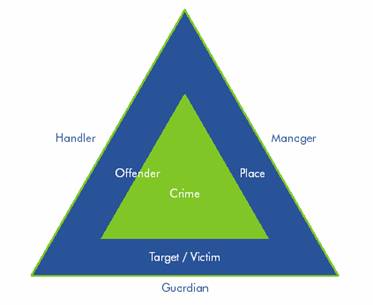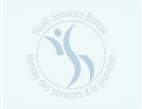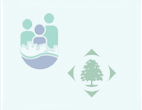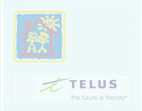









Keeping people safe & well
|
Foundation for Safer Communities
A Project implemented in Banff Ave. community
Funded by Ministry of Community Safety and Correctional Services
From April 2005- to April 2006.
Aims and goals
This project aimed to achieve significant and sustainable reductions in crime and disorder through addressing some of the underlying causes. It spacifically focused at reducing:
- recorded crime and incidents of anti-social behavior reported to the police;
- the number of young people arrested;
- anxiety about crime among residents, workers and visitors and the direct costs of crime.
The proposed project emphasize achieving sustainable improvements by:
- addressing risk factors that lead to young people to become young offenders
- empowering and supporting community members, including young people, to understand and accept cultural differences, complexity of race relations and resolve the issues that concern them.
- facilitating community responses to racial, cultural and hate-motivated activities.
The extensive involvement of local residents, together with joint working between police and other agencies, was a critical part of the project process. This project also contributed to other social outcomes, such as better health and greater engagement in community commitments. This project lead to paving the way for the implementation of No Community left Behind initiative.
This project followed ‘audit to action’ process that revolved around developing locally responsive action plans based on audited problem analysis. This process resulted in no single ‘product’, but a set of actions that were locally appropriate and led to the continuation of the initiative in the form of No Community Left Behind (NCLB). This approach involved:
- bringing together a neighborhood steering group (now called Steering Committee of NCLB, which includes representatives from key agencies, business, the voluntary sector and the community);
- working with the community to audit the neighborhood’s crime and related problems, looking at diversity, race relations and multicultural communities related problems, and determining priorities;
- develop a 1-year strategy and annual action plan based on systematic option appraisal;
- acting as a catalyst for implementing the action plan by encouraging local partners to act and helping raise additional resources;
- monitoring progress against agreed outcomes and outputs, and ensuring that the project remains outcome focused
- evaluating and reporting on project outcomes; and
- sustaining activity beyond the lifetime of the program.
The extensive involvement of local residents, together with joint working between police and other agencies, remained a critical part of the project process. This project also contributed to other social outcomes, such as better health and greater engagement in community commitments.
Priorities for action
Activities of the project were designed in consultation with the local residents, police and other partners to meet the particular requirements of Banff Avenue Community. A number of common themes had already emerged. For example, youth (12 and above) issues were a priority for action, while drug sale and use in the community had been identified priority both the neighborhoods. Other known problems such as lack of communities’ involvement, diminished communities, anti-social behavior and racism were prioritized with the help of the community.
Critical success factors and main obstacles
The development of a partnership model working at a local level, the re-orientation of service delivery, community involvement and the ‘audit to action’ approach proved to be the key areas which helped the project lay strong foundations in the community for future social development work.
The positive aspects on which SEOCHC further built a rationale are the following:
- Identified and appropriate geographical locations.
- Well-established partnerships in the form of tenants’ association and Banff Avenue Community Houses, and a solid base for continuing the development work.
- Targeting those most at-risk of victimization or offending, to yield the best results
- Working to support local neighborhood-based objectives, which are more realistic, and maintain higher levels of credibility than externally imposed ones.
Project Activities
Most of the project activities in the initial phases involved organizing the community around the theme of crime prevention and building meaningful partnerships. During the planning and implementation phases the focus was on three main approaches to reducing community crime: law enforcement, situational measures and criminality prevention.
The agreed upon actions to take varied widely, according to the particular needs of the local communities, but the process and approach to identifying and responding to local issues remained the same. This section gives a brief introduction to tackling some of the concerns that were already identified by residents in Banff community: anti-social behavior, drug-related crime, hate crime, and dealing with young people as victims and perpetrators.
Traditionally, there have been three main approaches to crime reduction:
- Law enforcement (to deter, detect and ‘treat’ crimes and the criminal, using the criminal justice system)
- Situational measures (Situational measures focus on situations in which crime might occur. This approach aims to deter or detect crime, using technology, people, design and management)
- Criminality prevention (focuses on the people in society who are most at-risk of becoming offenders.)
In each community, the nature and types of problems faced and the appropriate responses to them vary. As a way to be confident that the project was tackling the correct issues and responding to them in an effective way, SEOCHC followed the audit to action and problem-solving approach to each of the issues identified. There are a number of different problem-solving systems in use successfully in the crime reduction field. The approach that this project followed was the Problem Analysis Triangle with some additions that may clarify this project’s approach.

Theoretically, every crime problem has three components: offender, victim and location. If any one of these components is removed, the crime will not take place. To stop a single crime, removing a single side of the triangle is enough. However, to effectively solve a neighborhood crime problem (a pattern of crimes), the “Foundations for a Safer Community” project considered all three sides of this ‘crime triangle’, and to have an effective and long-term impact on a crime problem, the project aimed to remove at least two sides of the triangle.
Using the data gathered in the community audit process, the problem analysis triangle helped the community look at each crime and related problems, by breaking it down to look at the offenders, the victims and the Banff Avenue community where the crime and anti-social behavior was taking place. This enabled the community and partners to determine how to remove these and reduce the likelihood of criminal activities.
The project focused on three main activities through planning with the community.
- Activities to address anti-social behavior
- Activities to address drug related crimes.
- Activities to address hate crimes and race issues.
1. Activities against Anti-social behavior
Anti-social behavior is generally defined as acting ‘in a manner that causes or would likely to cause harassment, alarm or distress to one or more persons not of the same household. This includes nuisance, disorder and quality of life incidents, including noise, racial slurs, rowdy behavior, damage to property, intimidation and rubbish dumping.
Activities around this problem included:
- The anti-social behavior campaign, putting needs of the community first, including two training workshops for community members and others involved in tackling anti-social behavior at Banff Avenue community.
- Determination of Action Areas for the campaign to sorting out particular anti-social behavior problems.
Tackling anti-social behavior was tackled though a cocktail of measures as follows:
- prevention – identifying (Who’s doing it? What are they doing? Who are the victims, and is it happening again and again? when is it happening? How much is it costing?) anti-social activities) and stopping it happening in the first place
- intervention - nipping it in the bud
- enforcement - holding perpetrators to account
- resettlement - preventing a repetition
The communities members agreed on a number of activities to undertake according to their choice and local conditions. Such as they could agree on any of the following to stop anti-social behavior:
- forming and strengthening a Tenants’ Association
- appointing neighborhood wardens
- establishing neighborhood watch
- youth drop ins and activities for interaction with Ottawa Police Service
- Multi-cultural dinners
- inter-generational work/meetings
- multi-agency case conferences/information sessions
- problem-solving meetings
- information sharing
- mediation and community meetings
2. Activities against drug-related crime
Drug related crime is a complex problem, which the project could only contribute towards, rather than tackling alone. Addressing drug-related crime required partnership working at a level beyond the remit of a limited neighborhood safety project as this. That’s why the project evolved over a period of time and with financial support from National Crime Prevention Centre and now the City of Ottawa. However, with the expansion of project to three other communities under the title, No community Left Behind, more coordination and activity funding is required.
Drug-related crime was looked at from three perspective: a) Crimes of supply, b) Crimes committed as a consequence of dependency or intoxication, and c) Possession of illegal substances.
Offenders may commit one or all three of these, but offenders in the third category (possession) will not necessarily be involved in any other type of crime.
Ottawa Police Service assigned two police officers to this project. However, besides a strong law enforcement component, a range of actions helped disrupt the local drug market in Banff community, including:
- encouraging members of the local community to give information about drug dealing in their area, using informal or anonymous reporting pathways
- facilitating regular meetings and developing clear protocols about confidentiality and disclosure between police and other partners concerned with the management of public spaces, parking lots and buildings, including housing providers
- providing information and education about drug use to members of the local community, including early intervention and advice projects aimed at users who may not yet be involved in the criminal justice system, and their parents and friends
- developing linkage with effective prevention programs in schools, backed by work with parents, and providing support and education to those young people most at-risk - truants, those excluded from school and young offenders tackling the image and status of drug suppliers in the eyes of young people and offering alternative role models
- working with Ottawa Housing to control behavior and managing public spaces where drug supply and use is prevalent. This can include: stronger, localized housing management, with sanctions against antisocial behavior; redesigning to minimize the number of places where dealing can occur; supported housing for drug users; close management of vulnerable tenants who may be at risk of exploitation.
3. Activities against Hate crime
Hate crime is broadly defined as a crime where the perpetrator’s prejudice against any identifiable group of people is a factor in determining who is victimized. A victim of hate crime does not have to be a member of a minority or someone who is generally considered to be vulnerable. In some cases, the perpetrator’s perception may be wrong. This can result in a person entirely unconnected with the hate motivation becoming a victim. In reality, anyone can become a victim of a hate crime.
The activities attempted to address hate crimes include:
Hate Crime Reporting Schemes
Victims would be encouraged to report incidents of hate crime both to the neighborhood safety committee as well as to the police officer partnering in this project. The community surveys encouraged the residents to share their experiences if they felt comfortable.
Community Education Campaigns
Educating the community members to undertake workshops in multiculturalism as well as some basic community safety awareness for encouraging confidence in the police service has been a key strategy of tackling hate and homophobic crime. Initially, most community members were unwilling to come forward and report their experience though the traditional route of going into the police station. The project helped establish community-based reporting of racially motivated offences in non-threatening environments, such as community houses, community dinners, and through informal chat with the police officers and the direct approach to them police officers.
Community Liaison Groups / Campaigns
Efforts would be made to form multicultural, interfaith and multi-ethnic liaison groups. Tenants Association is the best outcome of these efforts. The association in Banff community is working with the police to encourage reporting, respond to abusive or violent incidents, support victims and often cover issues such as racial bullying and slurs.
Racial tensions
We are using the term ‘race’ because of the lack of a more accurate term. By using the term ‘race’ here, we are referring to people of all black, Arab and minority ethnic groups. Although the term is in common usage, delineating between groups on the basis of ethnicity can be misleading, and it can overlook the prejudice and degradation experienced by various ethnic groups, such as refugees from Africa, Asia or Middle East.PROGRAM EVALUATION
Maintaining the momentum
The funding from Ministry of Community Safety and Correctional Services helped the partners a lot in setting a stage for launching a more comprehensive project, called No Community Left Behind. It was envisaged from the beginning that once the project is up and running, SEOCHC would need to establish an on going process of planning, implementation and revaluation to keep up momentum. That is now actually happening.











©
2005-15 South - East Ottawa Community Health Centre
Centre de Sante Communautaire du Sud Est D'Ottawa
Contact: Abid Jan Tel./ Tél: (613) 737-5115 Ext. 2403 Fax/Télé: (613) 739-8199
NCLB matters because neighbourhoods matter

